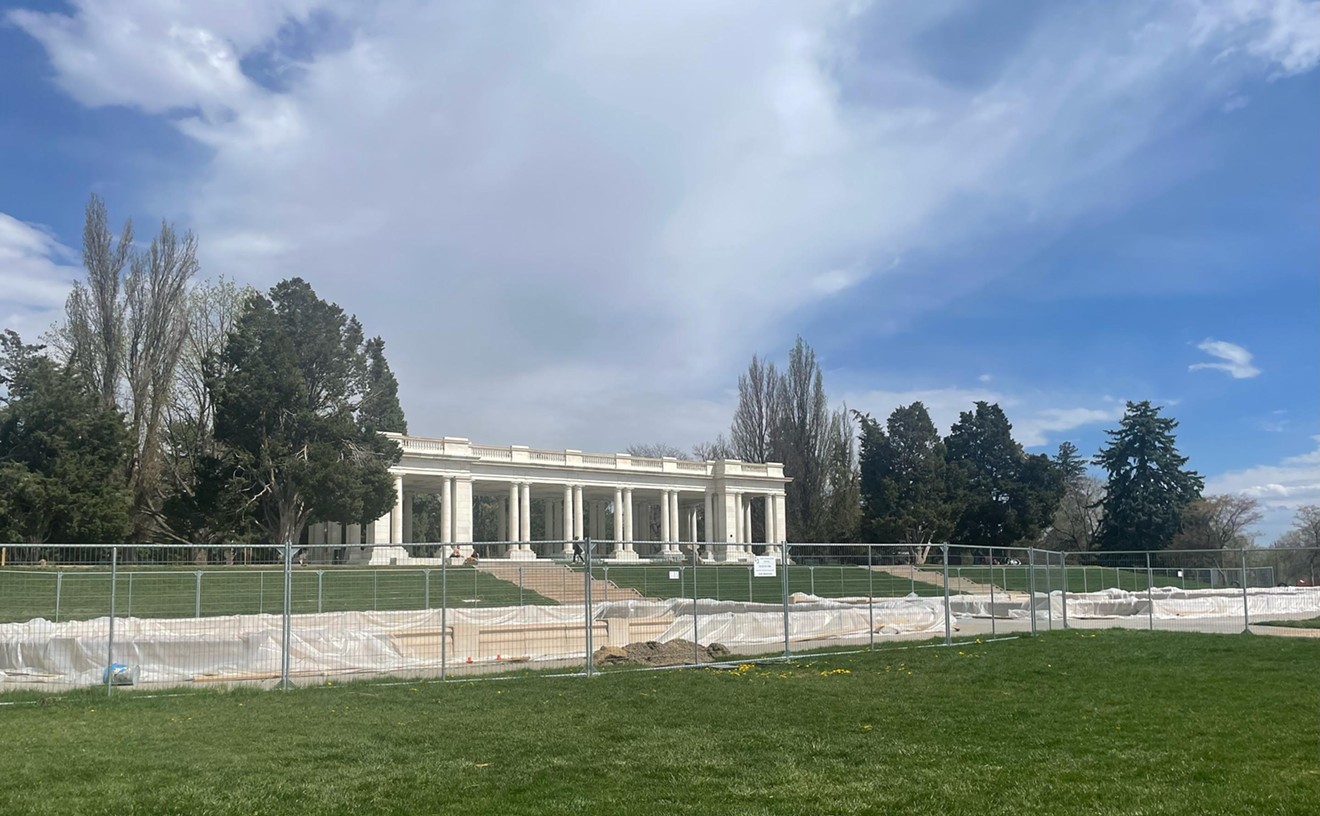I spent much of last week in Grand Junction, the town of my birth, and between visits with relatives, my family and I escaped the scorching heat for a few hours by going to a couple of movies, Hellboy II: The Golden Army and The Dark Knight. When I bought our tickets, however, I little realized that in addition to superhero mayhem, we'd also be seeing the next stage of theater evolution -- but we did. The films, which flickered at Grand Junction's Carmike 7 and Regal Cinemas Canyon View Stadium 14, respectively, were presented digitally rather than on old-fashioned celluloid.
This transition was explored in "Digitizing," a July 2007 Message column about National CineMedia, a company in Centennial that digitally beams "FirstLook," an advertisement-packed preview program, to around a third of the movie screens in America -- including those at the G.J. Regal. And while there are some drawbacks to the technology from a cineaste's perspective, my experience at the aforementioned pictures suggests that the pros outweigh the cons.
As any regular moviegoer knows, the quality of the images we see varies widely from theater to theater, and all too often, projection issues and aging prints can result in fuzziness, too much or too little brightness, scratchiness, visual distortion, audio drop-outs and more. No wonder so many people these days would rather stay at home and watch DVDs than trek to a multiplex. But the visuals at the two Grand Junction cinemas were exceedingly crisp and vivid, literally popping off the screen in a manner reminiscent of a mega-expensive HD television -- except the screen was as big as a building, not half of a door.
The tradeoff is visual complexity. The primary color scheme of Hellboy II, whose lead character is nicknamed Red, was perfect for digital -- but The Dark Knight would probably have worked a bit better if Wally Pfister's gloomy cinematography had been translated in a murkier manner. Figures in shadows were sometimes as distinct as those in the foreground, and that proved to be a mixed blessing. As digital projection becomes the industry standard, filmmakers will need to take the technology's quirks into account in order to achieve the effects they want. By movie standards, it's a new canvas.
Still, these are minor quibbles. I spent more than twenty years going to movies in Grand Junction, and by those often shaky standards, Hellboy II and The Dark Knight stood out as exceptional from a visual standpoint. I've seen the future of movie exhibition, and it looked mighty good. -- Michael Roberts











